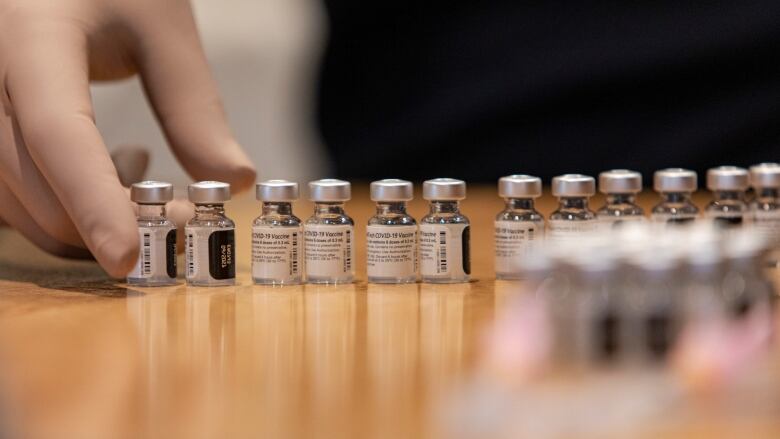Ontario stops increased vaccine supply to Toronto hot spots as city officials urge province to reconsider
Province will return to allocating doses by population in last 2 weeks of May

Next week, Ontario will stop sending 50 per cent of its COVID-19 vaccine supply to hot spot neighbourhoods,instead allocating doses evenly across the province.
But Toronto officials say the hot-spot strategy is a success story that needs to continue.
In April, the provincial government began targeting communities with high rates of COVID-19 infections the majority in Torontoby supplying them with 25 per cent of doses.
It ramped up that effort in the first two weeks of May to 50 per cent of doses.
By May 10, 53.2 per cent of people over 18 years of age in hot spots had received at least one dose, compared to 46.9 per cent of people in lower risk neighbourhoods, according to provincial data released Wednesday.
Toronto has administered more than 1.5 million vaccine doses and at least 70 per cent of residents over 50 have been vaccinated, Mayor John Tory said. The city has also seen double-digit increases in hot-spot vaccination rates. For example, in 13 postal codes, the rate for all adults jumped from less than 14 per cent to more than 48 per cent.
"We have been consistently advocating forcontinuation of extrasupply allocated to hot spots," saidTory Wednesday.
"It's best to hit the hardest where it is hitting people the hardest and we can produce the results to justify the allocation."
The province said it increased the supply of vaccines to those areas by one million doses as a "time-limited response to reduce COVID-19 case, hospitalizations and deaths."
It will return to allocating doses by population in the last two weeks of May, as it opens eligibility to people aged 30 and up May 17 and all adults over 18 on May 24.
Ontario expecting influx of doses
The province is expecting an influx of doses from the federal government, which will translate to more supply at the city level. For May, Ontario will receive close to four million doses.
Health Minister Christine Elliott said Wednesday that whilethe hot-spot approach is working, the increased vaccine supply"will continue to make it easier than ever for those who are most at risk of COVID-19 to receive a vaccine."
Toronto's Fire Chief Matthew Pegg, head of emergency management, said this weekclinics are administering 90,000 doses with the extra hot spot supply.
Next week that will drop to 60,000 doses, he said.
"Pop-up and mobile vaccine clinics have emerged as a real success story," said Medical Officer of Health Dr. Eileen de Villa.
"Putting resources in the hot-spot communities actually not only benefits those communities directly but it's frankly a big benefit for the entire province of Ontario."
The province's own science advisory table has recommended allocating 50 per cent of doses to hot spots for the entire month of May. Toronto's Board of Health passed a motion May 10 calling for the province to follow this advice.
Toronto & the GTA continue to experience high rates of COVID-19. Today our Board of Health unanimously called on the Province to adopt the Ontario Science Advisory Table's recommendation to extend 50% of vaccine supply to hot-spot areas for 4 weeks, rather than just 2 weeks.
—@joe_cressyToronto reported 814 new cases and 1,081 hospitalizations. More than 260 patients are in intensive care, and 20 more people have died.
Toronto is opening up an additional 5,000 appointments fornext week as residents over 40 will be allowed to get their doseat the city's mass vaccination sites. Almost all other spots are nearly fully booked.
It is also adding five more postal codes as hot spots to target withpop-up and mobile clinics.












_(720p).jpg)


 OFFICIAL HD MUSIC VIDEO.jpg)
.jpg)



























































































